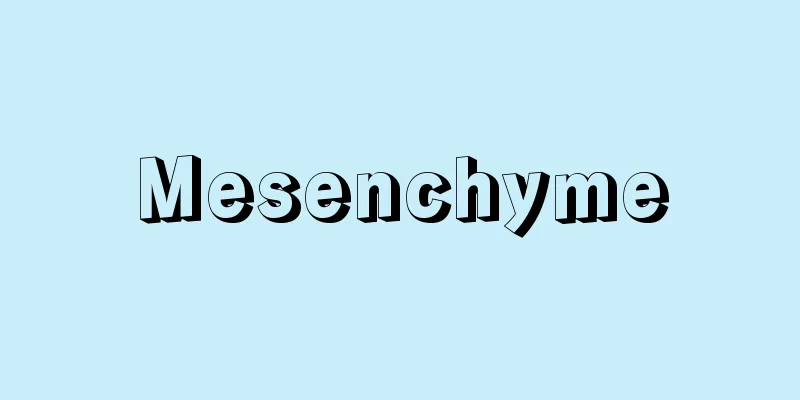Buried wood - Umoregi

(After the Heian period, it is often written as "mumoregi") [1] [noun] ① Wood that has been carbonized by being submerged in water or soil for many years. It is black-brown in color and has a hard material, and is used for crafts. ※Man'yoshu (late 8th century) 7:1385 "The buried wood of the riverbank of Kanamochi Yuge is revealed, and it is not a wonderful thing." ※Kokin ( 905-914 ) Koi 3:650 "If the buried wood of the riverbank appears, what will I do? I will be able to meet you in a dream. (Author unknown)" ② A person who has been abandoned by the world and has nothing to look after. A person with no place to rely on. ※Tsurayuki-shu (around 945) 10 "The reason I have become a buried wood of the mountains is because of the love that I cannot find anywhere." ③ Another name for the plant "fig (fig)". [Wakun Shiori (1777-1862)] [2] A book on haiku. One volume. Written by Kitamura Kigin. Completed in 1656. Published in 1673. Revised in the same year. Covering 15 topics such as the meaning of haiku, cutting words in verse, and teni wo ha, the book cites the theories of various poets since the Middle Ages, adds personal opinions, and provides examples. [Glossary] Although it is often used as a verse word, it is often written about as a product of the Natori River in Miyagi Prefecture, as in the example in (1)①, "Kokin-Koi San." The Natori River has long been famous as a source of buried wood. → Umoregi noUme-ki [Buried wood]Source: The Selected Edition of the Japanese Language Dictionary About the Selected Edition of the Japanese Language Dictionary Information |
(平安以後「むもれぎ」と表記されることが多い)[1] 〘名〙① 樹木が長い年月、水中、または土中にあって炭化した木。黒茶色で材質が堅く、細工物に用いられる。※万葉(8C後)七・一三八五「ま鉇(かな)もち弓削(ゆげ)の河原の埋木(うもれぎ)の顕(あら)はるましじき事にあらなくに」※古今(905‐914)恋三・六五〇「名とり川せぜのむもれぎあらはればいかにせんとかあひみそめけん〈よみ人しらず〉」② 世間から捨てられて顧みるものもなくなった境遇の者。たよる所のない身。※貫之集(945頃)一〇「おくやまのうもれぎに身をなすことはいろにもいでぬこひのためなり」③ 植物「いちじく(無花果)①」の異名。〔和訓栞(1777‐1862)〕[2] 俳諧論書。一冊。北村季吟著。明暦二年(一六五六)脱稿。延宝元年(一六七三)刊。同年改稿。俳諧の名義、発句切れ字、テニヲハなど一五項目にわたり、中世以来の諸家の説を引いて私見を加え、作例を示したもの。[語誌]歌語として多く用いられるが、(一)①の挙例「古今‐恋三」のように宮城県名取川の産物として詠まれることが多い。名取川は古くから埋もれ木の産地として有名。→うもれぎの
うめ‐き【埋木】出典 精選版 日本国語大辞典精選版 日本国語大辞典について 情報 |
Recommend
Venezi
…the ancestors of the Western Slavs. In Latin, th...
Conspiracy - inbou (English spelling) conspiracy
A secret scheme. There are political and criminal...
Trichosanthes kirilowii (English spelling)
…[Murata Gen] [Nitta Aya]. … *Some of the termino...
Calendar notes - Rekichu
Items to be recorded in a calendar. It became wide...
Minimum living expenses
The minimum cost of living is the monetary expres...
Kyojiro Hagiwara
Poet. Born in Gunma Prefecture. Graduated from Ma...
AP - AP
The world's largest news agency, located in t...
Ginkgophyta - Ginkgo
…This group flourished from the Paleozoic to the ...
Borazon
…This change is catalyzed by alkali metals or alk...
Akita Matagi - Akita Matagi
...A guard dog that originated in Akita Prefectur...
hexametros
...Therefore, his great influence can be seen eve...
Pontus Mountains
A general term for the folded mountain range that ...
Sweet grass
...A perennial grass of the grass family found in...
Tussi
The Watutsi, also known as the Tussi, are a peopl...
marché aux puces (English spelling) marcheauxpuces
…An open-air market selling antiques and used clo...









